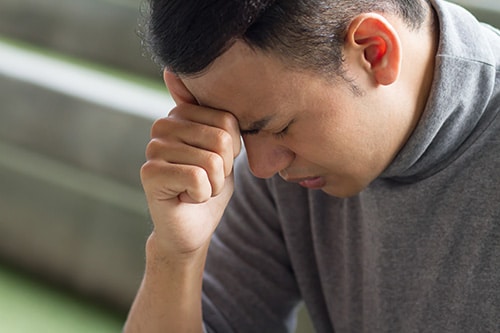Opioid Withdrawal
Home » Addiction Treatment Programs PA » Addiction Treatment Services » Opiate Addiction Rehab »
Opiate Withdrawal Symptoms

How Opioid Addiction Happens
Prescription opioids are widely available from doctors, coast-to-coast. In fact, The Centers for Disease Control and Prevention (CDC) reports that doctors wrote about 250 million opioid prescriptions in the U.S. during 2013. Doctors wrote these prescriptions to treat pain, reduce cough, sedate patients for surgery, or manage diarrhea. Unfortunately, some patients abused these prescriptions, leading many to addiction.
More than four million people abused prescribed opioids in 2014, and more than 400,000 people abused heroin that same year, according to the U.S. National Library of Medicine. People abuse opioids because they provide pleasurable, euphoric effects. These effects include a sense of well-being, reduced physical tension, decreased anxiety, and lowered aggression.
In 2014, more than 28,000 people died because of opioid or opiate overdose, according to the Centers for Disease Control. However, going through opioid withdrawal in a detox facility, followed by rehab, saves many lives. This is a decision you must make for yourself: Opioid withdrawal and detox, or continue risking overdose?
About Opioid Withdrawal
For people with opioid addiction, withdrawal occurs when they reduce their dose or stop using their drug altogether. Withdrawal is the body’s attempt to cleanse itself of opioid toxins to start fresh in sobriety.
Withdrawal from opioids is different for everyone. In addition, there are many factors contributing to your withdrawal experience, including which specific drug you used, how much you took as each dose, frequency of use, your physical health, and mental health status. If you used opioids for a long period of time at a high dose and with high frequency, you suffer uncomfortable withdrawal. Someone who uses less at a lower dose and lower frequency suffers less.
During your withdrawal, you experience strong cravings for your drug of choice. You also experience severe depression, since the opioid controlled your pleasure response for so long. If you give into cravings, you risk fatal overdose after your tolerance reduces in early withdrawal. Some people risk self-injury or suicide later in withdrawal.
All of these are reasons why it is important to enter a licensed detox for withdrawal. In a licensed detox program, you gain the support, comfort, nutrition and medications you need to get through withdrawal once and for all. After detox ends, you immediately begin addiction treatment and the important therapies you need for lasting sobriety. By following these simple steps, you can have a better life in drug addiction recovery.
Where Your Life Begins Again after Opioid Addiction
After opioid addiction, withdrawal seems like a never-ending process. However, acute withdrawal takes about a week to ten days in a detox facility. After detox, you’ll be ready for rehab and your new life in recovery.
Silver Pines Treatment Center near Hazelton, Pennsylvania provides healthy, safe, and secure detox. Here, you gain the support, comfort, and care you deserve for detox and rehab. Programs of Silver Pines Treatment Center include:
- Highly structured treatment
- Detox Programs
- Residential rehab
- Family program
- Nutrition Education
- Yoga Therapy
- Physical fitness, and work therapy
- Outdoor therapies
- Trauma therapy
- Holistic treatment
At Silver Pines Treatment Center, you get the help you need to end your opioid addiction. Call us today at 267.719.8689 for more information about available addiction treatment programs.